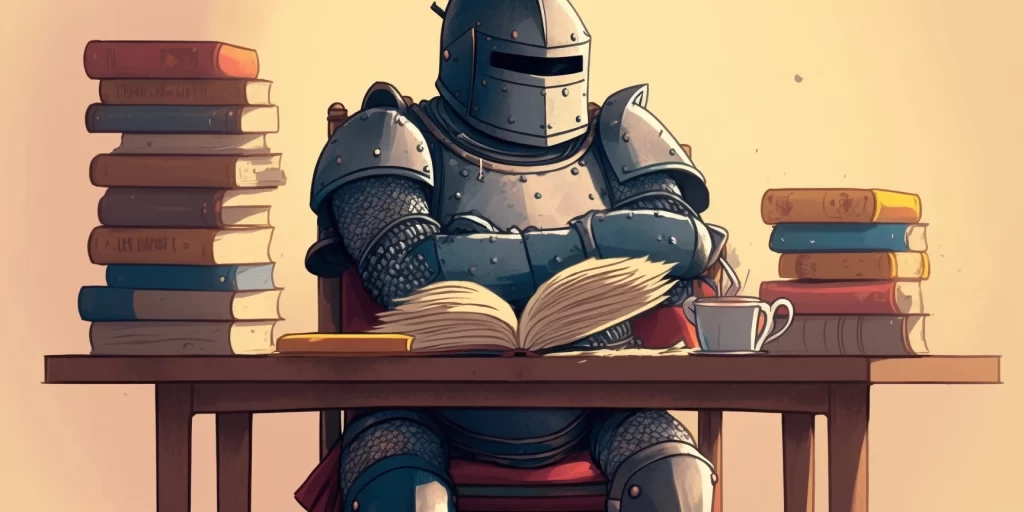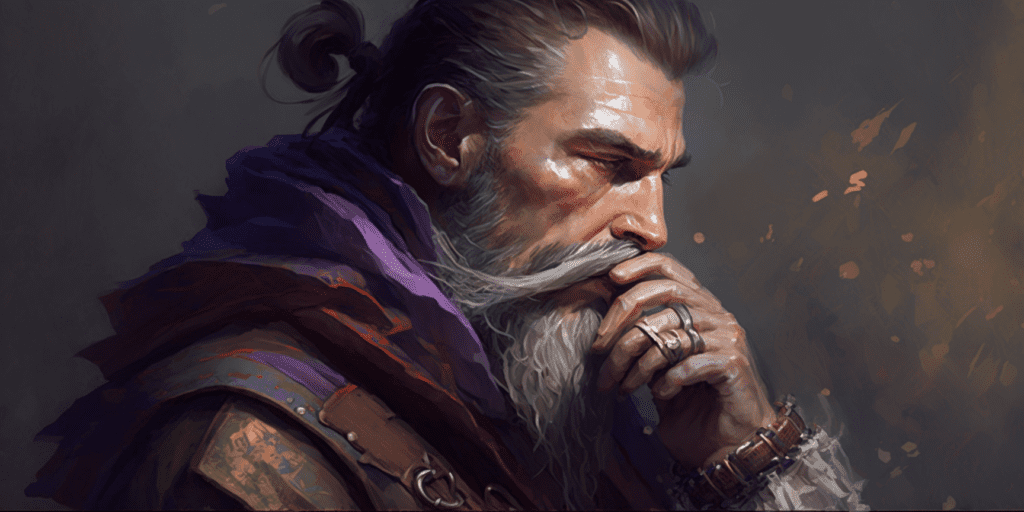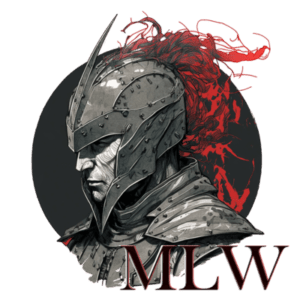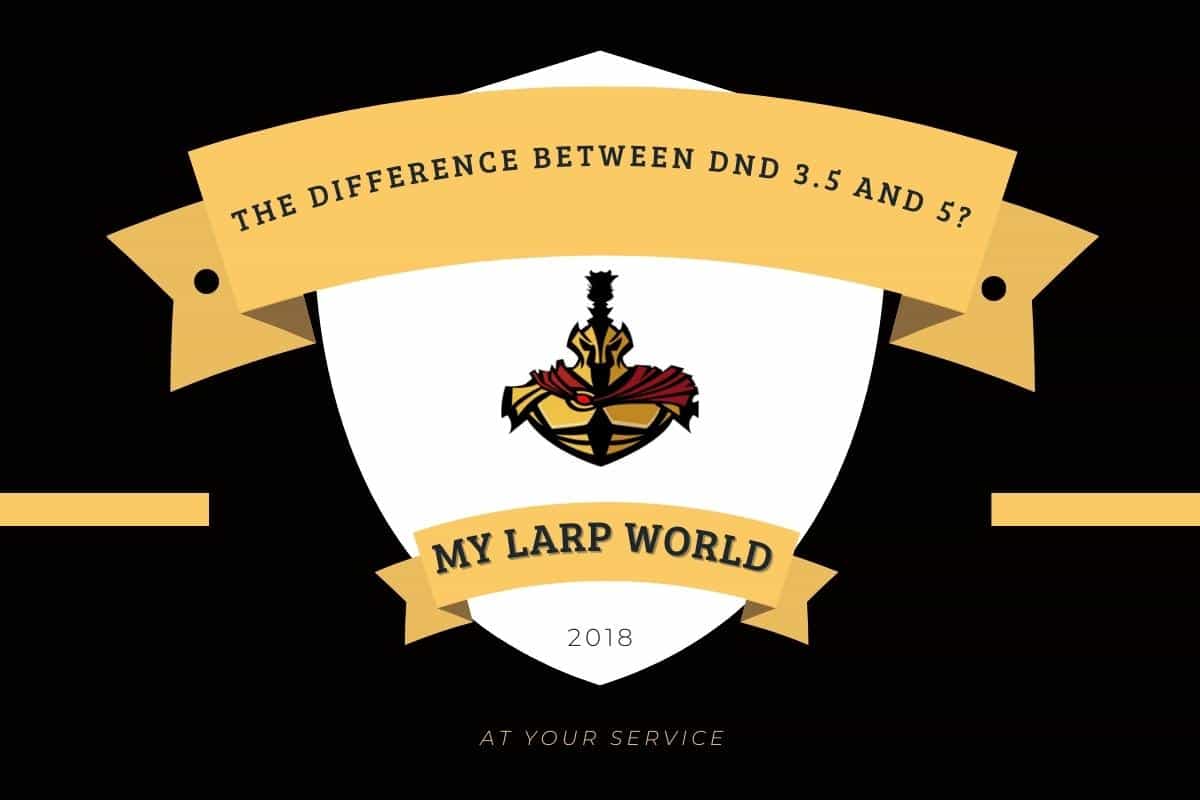The roleplaying game Dungeons and Dragons has been released in different editions. Among these editions, editions 3.5 and 5 have both been popular. One was released 11 years before the other, but they are still built using the same fundamental rules and principles.
But even though they’ve used similar rules, there are still some key differences that are worth mentioning. Both are well-regarded editions of the game and just like everything else, they both come with their weaknesses and strengths. Personal preference will be the main determinator of which edition you’ll like.
So, what are the differences? In short, you could say that:
The difference between Dungeons and Dragons edition 3.5 and 5 is that edition 3.5 is more complex and detailed with its large number of rules and options, which makes it suitable for seasoned players who want challenges, but less beginner-friendly. The 5th edition of the game is easier to adopt, giving players more time to focus on storytelling and roleplaying.
Of course, the differences mentioned above are not the only ones, and they’re not explained in-depth. In this article, we will go through the differences and explain whom the different editions might be suitable for. So, if you’re curious about the two editions, continue reading.
The Main Differences Between DnD 3.5 And 5

Enough talking! Let’s start comparing these two, we’re not going to rate the editions or tell you which one is best, as we think both of these editions are worth playing and they bring something to the table.
Our comparison (down below) will give you what you need to make a decision about whether or not you want to play the aforementioned or the latter edition.
Remember, there are a ton of different books per edition and all of the things we discuss might not apply to them all. The third edition of the game has over 100 books, while the fifth edition has fewer.
Base Classes
The number of different base classes the player can choose from varies between these two editions. In Dungeons and Dragons 3.5, there are 11 classes to choose from. Among these ten classes you will find:
- Barbarian
- Bard
- Cleric
- Druid
- Fighter
- Monk
- Paladin
- Ranger
- Rogue
- Sorcerer
- Wizard
Whereas the fifth edition of Dungeons and Dragons has a total of 13 base classes to choose from. In addition to the classes mentioned above, one more class is added in the early versions and another one in the more recent versions.
- Warlock
- Artificer
It’s worth mentioning that these classes have subclasses or variations. This provides the player with the option to customize their character’s strengths and weaknesses even further. The base classes available are just a fraction of the total classes available in Dungeons and Dragons.
As your character evolves it will gain access to special paths that offer the character properties that differentiate themselves from the character’s base skills. Thanks to special paths, including two of the same class in your party becomes more viable as their focus can be two different things.
Simplicity
Simplicity is one of the core differences between the two editions of Dungeons as Dragons. In the fifth edition players are held by the hand as they go through the character creation stage, whereas in edition 3.5, the player has to make a lot of decisions with a rather grand ruleset to back them up.
The possibilities and complexity in 3.5 require a bit of preparation to be enjoyed as smoothly as possible. Your character can use complex builds which means you’ll have to micromanage a lot of things as you go.
DnD 5 is more straightforward and accessible for new players, but veteran players who can handle a lot of options without being overwhelmed might feel limited by not having as many options as before, or by being guided by the game a bit more.
XP Progression
One aspect of DnD 5e that isn’t simpler than its predecessors is the XP progression. In 3.5, calculating your level was a piece of cake with simple formulas, whereas 5 has a slightly more complex system that spans over 4 different tiers of power that the character levels can be split between.
Prestige Classes
Prestige Classes are additional classes or supplemental advancement paths for a character to take. These classes are usually only available to a character when certain prerequisites are met, such as a certain level of experience.
Prestige Classes often come with abilities that other classes don’t have access to, and they must sacrifice some of their own abilities in order to gain the new ones. Prestige Classes are totally optional in Dungeons and Dragons 3.5, but they’re a great supplement for a group that may lack expertise or skill in a certain area.
Prestige Classes don’t exist in Dungeons and Dragons’ fifth edition. Instead, they’ve used the concepts of class archetypes, which offer the player the option to customize his or her character. There are not as many options, but they still get the job done.
Epic Levels
In Dungeons and Dragons 3.5, “Epic levels” refers to all levels beyond the maximum level a character can reach, which is level 20. Levels 21 and up are considered epic levels because they’re seen as unattainable for most characters in regular campaigns.
In long-lasting campaigns, epic levels play an important role as most players will be looking for a way to continue advancing their character. With each epic level reached, the character will gain hit points, abilities, and other rewards, but at a much slower rate than the initial levels.
In the 5th edition, characters are meant to be played between levels 1-20 but characters can still progress past level 20, but epic levels are not a part of the core game rules. Dungeon Masters can make their own rules regarding levels beyond 20, or use third-party rulesets.
But don’t fret, there are other ways for your character to advance once you’ve reached max level. Characters can still gain more hit points, abilities, and other rewards throughout the game through the use of various magic items or by taking on special roles.
In the end, this can be customized to your group’s liking by your dungeon master.
Skill System

The skill system is somewhat simplified in comparison to 3.5’s system by using character background as a determinator for skills. All in all, the system requires less management and is more straightforward. The character’s skills correlate strongly with the character’s background.
To truly understand the skill system, I recommend reading a bit more about it. We won’t go into greater detail here.
Balance
In Dungeons and Dragons 5, it’s clear that the game designers have spent quite some time ensuring that the different classes are more balanced. Especially when you compare it to earlier editions, where some classes were incredibly overpowered at certain stages.
With that said, you will experience moments where some characters and their options are more powerful than others in 5e too but they tend to be more evenly matched to mitigate the issues that come with imbalanced classes.
In 5e, no character is going to single-handedly win the fight or throw shade over the rest of the party by doing massive damage or using overpowered spells.
Magic Items
Magic items are not as common in 5e as they are in other editions of the game. The game doesn’t expect player characters to carry magic items in greater numbers.
Less Crunch
Crunch is a term that’s widely used in the DnD community but rarely defined, it’s as if everyone knows what it means without discussing it. I had to search for the most popular definition of the term to make sure I was on the same page as everyone else reading this.
Crunch can be described as the amount of work or actions required from players to count the damage and resolve conflicts, for instance. It has to do with the amount of mechanics in the game, and the simplicity of these mechanics, and how much they require from the player.
In DnD, you will sometimes find yourself looking through tables or lists in order to advance the game, this would be described as crunchy. The more time a mechanic takes, the crunchier it might be.
Shorter Combat Sequences
As a result of the reduced crunchiness of the fifth edition, most combat-type conflicts are resolved much more quickly than they were in 3.5. With that said, combat can still be long in the fifth edition, but it won’t be anywhere close to 3.5.
No Alignment Limitations
Character alignment is a way to describe the ethical and moral views of any creature in Dungeons and Dragons, including player characters and non-player characters. Characters can be placed somewhere between “Lawful” and “Chaotic” on the spectrum.
The character’s actions and responses in situations will reflect where on the spectrum the character has been placed. In the fifth edition of the game, changes were made that no longer limit the character from developing interesting character concepts.
Should I Play DnD 3.5 or 5 First?

Whether you should start playing the third or fifth edition first comes down to personal preference, but I might have some guidance to offer to make your decision easier. If the topics we’ve already covered haven’t made the decision clear to you.
As we’ve mentioned, the fifth edition of the game is more beginner-friendly with easier character creation, mechanics, more balanced, less crunch, detail, and micro-management. However, there are other things to consider!
Finding players to play with will be much easier for 5e as there are more people playing it and because the threshold for new players is lowered, the player base will most likely continue to grow.
Introducing new friends to 5e will also be easier because they won’t feel discouraged by the sheer amount of things to learn. There are disadvantages to the fifth edition too, of course.
One thing is that there are fewer options, which limits the flavor of the game a bit. I don’t think this will have a negative impact on new players as they’re just getting into it and might feel overwhelmed by too many options.
Sometimes, the rules are quite vague, which gives the dungeon master more control, as he or she can bend the game slightly. This can, of course, be discussed in the group so that everyone feels that the rules of the game are appropriate.
If you’ve played similar games before and can grasp the concept of roleplaying games, you might enjoy Dungeons and Dragons 3.5. Still, it comes down to personal preference – so if you have the option to test both editions, I think you should.

